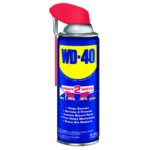Many people do not realize it, but it takes a lot of work and dedication to keep a garage door running strong for a long time. That’s why it’s your job as a garage door owner to keep track of your garage door. You can accomplish this by always hiring professional service technicians to handle maintenance of your garage door. You can help even more by performing your own inspections. The goal here is to inform you of what you can do to help with the servicing of garage door springs.
Garage door springs play a big role in the functionality of a garage door. They are used to provide stability. Because of this, they are also under constant pressure. Springs tend to be the first component of a garage door that fails, or needs attention before it fails.
The average spring has a life expectancy of 10,000 cycles. One cycle is opening and closing the garage door once. This may not seem like a lot, and if you live alone or are the only driver, it isn’t. On the other hand, if you live in a big family with many drivers, you might well exceed the normal 2-cycle daily usage. Some families use the garage for more than just driving. For example, children and teens might use the garage door to retrieve equipment, especially for sports.
Therefore, it is important to remember that after roughly 10,000 cycles, the average garage door spring will wear out and need to be replaced. This applies to both torsion springs and extension springs.
How To Check Your Garage Door Springs
Every garage door opener has an emergency pull cord, almost always labeled in red. Pulling this cord will allow you to manually open and close your garage door by hand. This is useful when troubleshooting garage door springs. Once you’ve pulled the cord, go ahead, and open the garage door halfway off the ground. When you let go, does it fall back to the ground? If so, your springs need to be replaced. If it stays put with little to no falling, your springs are in good shape.
labeled in red. Pulling this cord will allow you to manually open and close your garage door by hand. This is useful when troubleshooting garage door springs. Once you’ve pulled the cord, go ahead, and open the garage door halfway off the ground. When you let go, does it fall back to the ground? If so, your springs need to be replaced. If it stays put with little to no falling, your springs are in good shape.
 One thing you can do yourself is use WD-40 to lubricate your springs. This will prevent the buildup of rust, which is corrosive and can lessen the lifespan of a spring. Another great and better option all around is to contact your local garage door repair company and ask about extended life springs, which generally last 4 times longer than the average spring.
One thing you can do yourself is use WD-40 to lubricate your springs. This will prevent the buildup of rust, which is corrosive and can lessen the lifespan of a spring. Another great and better option all around is to contact your local garage door repair company and ask about extended life springs, which generally last 4 times longer than the average spring.
Now that you know the ins and outs of garage door springs, how to inspect them, and how to test them for damage, you’ll be able to make better informed decisions in the future. Never try servicing garage door springs on your own, because serious injury can occur.






